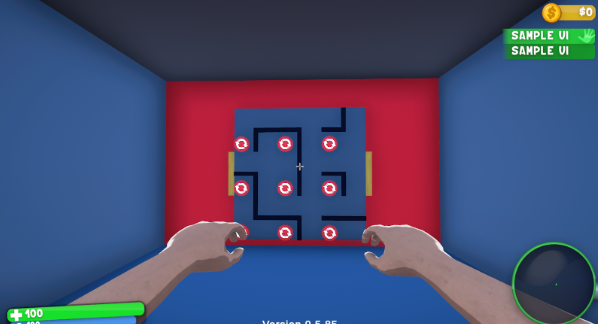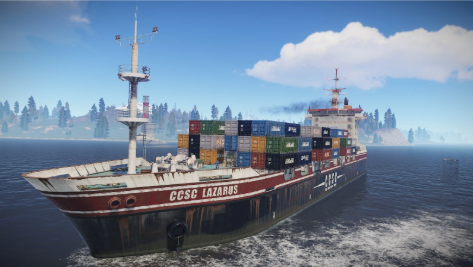Slap-It Together is an exciting online co-op zombie horde-survival game produced by 'Head Tilt Games'. Players must use objects they find throughout the map to use as makeshift weapons and survive the zombie onslaught.

Responsiblities
On Slap It Together, I was the project lead. By the end of this project, I had:
-
Led a team of 5 (grew to 7 by the end of production, lasting 3 years part-time) in collaboration with my co-founders
-
Pitched to potential investors/publishers
-
Scheduled regular, individual team check-ins
-
Developed DevOps knowledge to implement an automated build deployment CI/CD pipeline through TeamCity and GitHub, accompanied by integration with Jira tasks
-
Made an effective QA pipeline with detailed testing plans for regression and gameplay tests
-
Showcased at various events including Insomnia, GDLX and FORMAT to inform future design decisions from an early development stage
-
Announced the release date on stage at GDLX24, where we were also awarded "Best Multiplayer Game", of which we were nominated by attendees
-
Shipped the game onto PC, Mac and Linux platforms through Steam, amassing 10k unique demo downloads
Additionally, I acted as the sole programmer of the project
- Worked in Unity
-
Created all scripts within the game including dynamic interaction systems, enemy AI using state machines and designer tooling by creating custom editor scripts
-
Provided a strong basis for a reliable multiplayer experience relying on Steam relays over a P2P network using the Mirror Networking package
-
Supplied supporting documentation for future designers
Finally, I designed multiple levels and saw them through to completion
-
Established core level design pillars
-
Creating level layouts in greybox
-
Scripted gameplay level events including puzzles and spline animations
-
Carried out collision testing
-
Discussed thematic decisions with the team and provided a basis for the artists
-
Led another level designer and directed them to create mini levels to compliment the main game experience
Throughout my time working on Slap-It Together!, there were a few pitfalls. As a result of having no money behind us, all work was done off our own backs and we were pushed to our limits throughout production. Marketing was incredibly difficult to pull off as a result of our manpower being stretched thin.
We also made a lot of very good decisions. For one, we had multiple interns working with us who assisted with our design and art workflows. It taught me a lot about how to manage people and the experience I garnered from this was invaluable. Our meetings became more structured and we became more confident in each other. Also, we were able to stay motivated on a part-time basis for over 3 years of consistent development. Finally, we put together a thorough QA plan that we integrated into every step of production. Milestones were put in place that oftentimes aligned with showcase events across the UK - these events were crucial in 2 things: staying passionate and getting feedback.
Overall, the final product is something I'm super proud of. Making co-op games is my dream, and this was my first proper foray into that landscape. I'm excited at the prospect of delving further into this side of game design further for future projects.
Level Design
Uh-Oh Rooftops
The Rooftops was the first level designed for the game. On the initial pass, we were still designing and learning the game's core mechanics. In hindsight, we shouldn't have made this level yet.

After the mechanics had been finetuned, we spent time ripping out this antiquated design and replacing it with what became our frequented showcase level.




Twisty Tunnels
At the start of this level's design, we knew how to attack the design process. I knew I wanted a level with a subway, and this level was exactly that. Inspired by Black Ops II Zombies Tranzit, I began by creating the entrance and a subway line.
The world-space subway line was later scrapped and we instead opted for teleporting the train. This allowed us to finetune times between each subway station which led to more tightly-paced gameplay.






At this stage of development, we took on a design intern to assist in a couple of the stations' designs whilst I implemented any new mechanics that were needed on top of finalising puzzles and the ending area.




Crazy Cruise
This level was completed hastily. With a release window in mind, we needed to get this final level implemented before launch 8 months later. With our time constraints, this equated to 3-4 months of development time given other commitments. At this stage, it was just me and my co-founder working on the levels themselves. Despite this, we knew we wanted to have a boss fight to round things off. An obvious approach to this was a massive kraken attacking the boat.
References helped massively throughout development:













